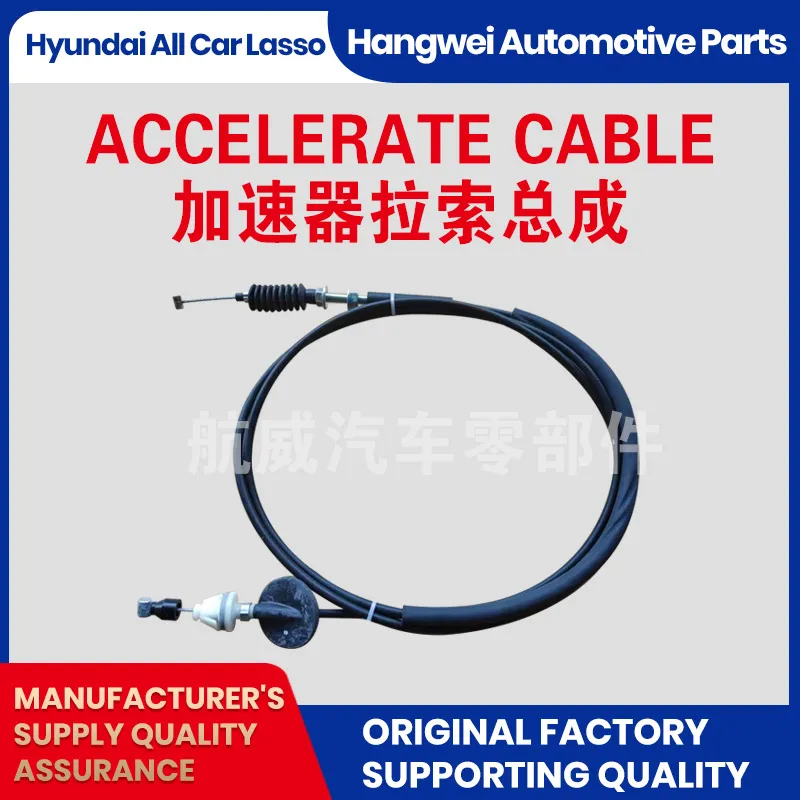Adjusting the Carburetor Cable for Optimal Engine Performance and Response
Understanding Carburetor Cables An Essential Component for Optimal Engine Performance
The carburetor cable is a vital component in the functioning of many internal combustion engines, particularly in older cars and small engines like those found in motorcycles, lawnmowers, and outboard motors. It is a simple yet critical cable that connects the throttle lever to the carburetor, allowing the driver to control the amount of air-fuel mixture entering the engine. Understanding how carburetor cables work and their importance to engine performance can lead to better maintenance and performance optimization.
What is a Carburetor Cable?
A carburetor cable is a flexible cable typically made of steel wire, encased in a protective sheath. It connects the throttle pedal (or lever) inside the vehicle to the carburetor, where the air-fuel mixture is regulated. When the driver accelerates, the cable pulls on a throttle valve in the carburetor, opening it to allow more air and fuel to mix and enter the engine. This action increases the power output and responsiveness of the vehicle.
Importance of Carburetor Cables
1. Throttle Response A well-functioning carburetor cable is crucial for quick and smooth throttle response. When the driver presses the accelerator, the immediate opening of the throttle valve allows the engine to respond without lag. This responsiveness is vital for performance, especially in situations requiring quick acceleration, like merging onto highways or overtaking slower vehicles.
2. Engine Performance Proper regulation of the air-fuel mixture is critical for engine efficiency and performance. A malfunctioning cable can lead to improper throttle control, resulting in either an overly rich or overly lean mixture. An overly rich mixture often causes poor fuel economy and increased emissions, while a lean mixture can lead to engine knocking and potential damage. Therefore, regular inspection of the carburetor cable helps maintain optimal engine performance.
3. Safety A malfunctioning carburetor cable can become a safety hazard. If the cable breaks or becomes stuck, it can cause unintended acceleration or failure to accelerate when needed. This could lead to dangerous situations on the road. Thus, ensuring that the carburetor cable is in good condition is essential for safe vehicle operation.
carburetor cable

Maintenance Tips for Carburetor Cables
Maintaining the carburetor cable is essential to ensure it operates smoothly and efficiently. Here are some maintenance tips
- Regular Inspection Periodically check the cable for signs of wear, fraying, or corrosion. A visual inspection can often reveal issues before they become significant problems.
- Lubrication Keeping the cable well-lubricated will prevent it from binding or snapping. Use a suitable cable lubricant; avoiding dirt and grime buildup is crucial for smooth operation.
- Proper Adjustment Ensure that the cable is correctly adjusted. An excessively tight or loose cable can lead to performance issues and should be adjusted according to the manufacturer's specifications.
- Replacement If the cable shows significant wear or damage, it is prudent to replace it. Using high-quality replacement parts can avoid future issues and enhance overall performance.
Conclusion
Carburetor cables are unassuming but essential components for optimal engine performance. They serve as the critical link between the driver’s input and the engine’s output, regulating the throttle and, consequently, the air-fuel mixture entering the engine. Understanding their importance can help vehicle owners maintain their engines better, enhance performance, and ensure safety on the road. Regular inspections, proper maintenance, and timely replacements are vital to keeping carburetor cables in excellent working condition, ultimately contributing to a smoother and more efficient driving experience.
-
Workings of Clutch Pipe and Hose SystemsNewsJun.04,2025
-
The Inner Workings of Hand Brake Cable SystemsNewsJun.04,2025
-
The Secrets of Throttle and Accelerator CablesNewsJun.04,2025
-
The Hidden Lifeline of Your Transmission Gear Shift CablesNewsJun.04,2025
-
Demystifying Gear Cables and Shift LinkagesNewsJun.04,2025
-
Decoding Clutch Line Systems A Comprehensive GuideNewsJun.04,2025
